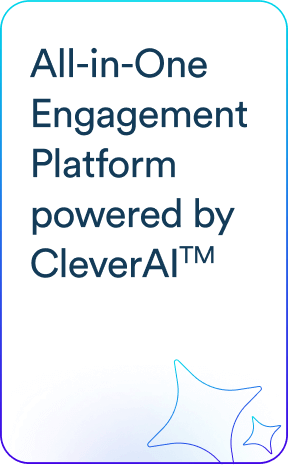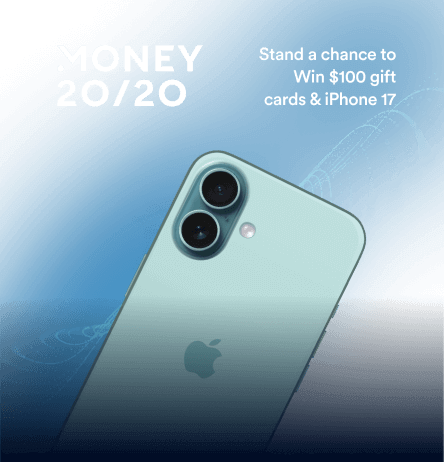Marketers use omnichannel marketing automation to create integrated, personalized customer experiences across various platforms. With practical tips and compelling examples, we’ll explore how this approach can help your brand engage effectively and drive conversions.
Today’s digital landscape is evolving at a lightning pace, and capturing and retaining customer attention is more challenging than ever. Enter omnichannel marketing automation, the game-changing strategy that ensures your brand’s message is seamlessly integrated across multiple platforms.
Omnichannel marketing automation helps you deliver the same personalized, engaging experience to customers whether they’re browsing your website, scrolling through social media, or reading an email. This consistency not only builds customer trust in your brand, it also deepens loyalty and boosts your competitive edge. Dive into this article to discover why omnichannel marketing automation is essential for modern businesses and learn how it can transform your marketing efforts into a well-orchestrated symphony that captivates and converts.
Why is Omnichannel Marketing Automation Important?
Omnichannel marketing automation streamlines marketing activities over various channels to create a harmonious brand experience. By using software to automate promotional efforts across email, social media, and websites, you ensure your brand’s message is consistent and engaging no matter where your customers interact with you.
How’d you like to walk into your favorite coffee shop and always receive the same warm, friendly service, whether you order in person, through their app, or via their website? A consistent customer experience across channels strengthens a brand’s identity, making customers feel at home wherever they connect with it.
Automation allows you to deliver timely, personalized messages that will resonate with your audience. By leveraging data, you can engage customers with content relevant to their interests and needs, enhancing their overall experience and driving higher levels of engagement. When you consistently interact with customers in a personalized manner, they feel valued and understood are more likely to return. This ultimately boosts your retention rates and builds long-term loyalty.
6 Benefits of Omnichannel Marketing Automation

Omnichannel marketing automation has become an industry standard for brands–and with good reason. Here are some of its proven benefits:
Increased Customer Engagement
Omnichannel automation keeps customers engaged by offering a seamless experience across various touchpoints. Whether it’s through email, social media, or mobile apps, you can deliver timely and relevant messages that capture their interest. This continuous engagement nurtures your relationships and encourages ongoing interaction with your brand, making customers feel valued and connected.
Enhanced Personalization
With omnichannel marketing automation, you gather data-driven insights that allow you to create more personalized experiences. By understanding customer preferences and behaviors, you can tailor your messages to meet individual needs. This level of personalization shows customers that you understand and care about them, fostering deeper connections and loyalty.
Improved Efficiency and Productivity
Automation streamlines your marketing processes, saving valuable time and resources. By automating repetitive tasks like email campaigns and social media posts, you free up time to focus on strategic initiatives. This increased efficiency lets you achieve more with less effort, ultimately boosting your productivity and return on investment (ROI).
Higher Conversion Rates
Omnichannel strategies are directly linked to improved sales. By providing a cohesive experience across all channels, you can guide customers through their buying journey more effectively. Consistent messaging and personalized interactions increase the likelihood of conversions, driving higher sales and revenue for your brand.
Better Customer Insights
Collecting data from various channels gives you a comprehensive understanding of customer behavior. You can analyze this information to identify trends, preferences, and pain points. These insights enable you to make informed decisions, refine your strategies, and deliver more targeted and effective marketing campaigns.
Seamless Integration of Marketing Channels
Automation ensures a unified approach across all marketing platforms. By integrating channels like email, social media, and mobile, you create a seamless customer experience. This cohesive strategy enhances brand consistency and ensures all your messaging is aligned, reinforcing brand identity at every touchpoint.
How to Implement Omnichannel Marketing Automation

Creating an effective omnichannel marketing strategy can feel like a complex puzzle, but with the right pieces, it all comes together beautifully. Use these steps to guide you in building a strategy that connects with your audience at every touchpoint.
Set Clear Objectives
To create effective omnichannel marketing strategies, start by setting clear objectives. Identifying your goals and key performance indicators (KPIs) is essential. Are you aiming to boost customer engagement, increase conversion rates, or improve customer retention? Defining these objectives helps you select the right metrics for gauging the success of your campaigns. If the goal is to increase customer engagement, your KPIs might include metrics like click-through rates, social media interactions, and email open rates.
Understand Your Customer Journey
Mapping out the customer journey is like drawing a roadmap. You need to identify key touchpoints where customers interact with your brand. This could be through social media, email, your website, or in-store visits. Understanding these touchpoints ensures you deliver the right message at the right time. A customer might first discover your brand on social media, visit your website to learn more, and finally make a purchase through your mobile app. By mapping this journey, you can ensure a cohesive experience your customers will enjoy.
Segment Your Audience
Effective audience segmentation is a cornerstone of personalized marketing. You can segment your audience based on demographics, behavior, purchase history, and engagement levels. A common way to segment audiences is to create a segment for first-time buyers, another for repeat customers, and a third for high-value clients. By tailoring your messages to each segment, you can create more relevant and compelling content. Techniques such as RFM Analysis (Recency, Frequency, Monetary value) and customer persona development can help you achieve precise segmentation.
Choose the Right Channels
Not all channels are created equal, and choosing the right ones is vital for effectively reaching your audience. You need to evaluate which channels your target audience frequents. Younger demographics might be more active on Instagram and TikTok, while professionals might prefer LinkedIn and email. By selecting the most effective channels, we can ensure our messages reach the right people. It’s also beneficial to test different channels and analyze their performance to determine where you should channel your marketing resources.
Integrate Your Marketing Tools
Your marketing tools should work together like a well-oiled machine. Make sure your CRM, email marketing, social media management tools, and other platforms are integrated. This synergy allows you to track customer interactions and deliver consistent messages. For example, integrating your CRM with your email marketing tool allows you to send personalized emails based on customer data. A unified approach ensures that your marketing efforts are cohesive and streamlined.
Craft Personalized Content
Creating personalized content is key to capturing your audience’s attention. You need to tailor your messages to different segments, ensuring they resonate with each group. As an example, you might create content that addresses the specific pain points of first-time buyers while offering exclusive deals to loyal customers. Personalization can extend to email subject lines, social media ads, and even website content. By making your audience feel valued and understood, you can foster deeper connections.
Implement Automation Workflows
Setting up automated workflows helps you manage your campaigns efficiently. You can create workflows for different stages of the customer journey, such as welcome emails for new subscribers, abandoned cart reminders, and post-purchase follow-ups. These workflows ensure timely and relevant communication without manual intervention. An abandoned cart workflow might send a reminder email 24 hours after a customer leaves items in their cart, followed by a discount offer if they don’t complete the purchase.
Test and Optimize
Continuous testing and optimization are essential for improving your campaigns. A/B testing allows you to compare different versions of your messages to see which performs better. You can test email subject lines, social media ad copy, and landing page designs. By analyzing the results, you can adjust your strategies for better outcomes. If an A/B test shows that emails with personalized subject lines have higher open rates, you can implement this approach across all your email campaigns.
Monitor and Analyze
Tracking the performance of your campaigns is vital for understanding their impact. You need tools and techniques to monitor key metrics such as conversion rates, customer engagement, and return on investment (ROI). Platforms like Google Analytics, social media insights, and CRM reports provide valuable data. By analyzing this data, we can identify trends, measure success, and make informed decisions. For instance, if you notice a drop in email open rates, you can investigate and adjust your email marketing strategy accordingly.
Adapt to Feedback and Trends
Finally, you must stay agile and adapt to customer feedback and market trends. Listening to your customers helps you understand their needs and preferences. You can use surveys, social media interactions, and customer reviews to gather feedback. Additionally, keeping an eye on industry trends ensures your strategies remain relevant; if you notice a growing trend towards video content, you might incorporate more videos into your marketing efforts. By staying responsive, you can continually refine your strategies and stay ahead of the competition.
Examples of Companies Using Omnichannel Marketing Automation
Omnichannel automation has become an absolute necessity in modern marketing. Here are some examples of how major brands have taken omnichannel automation to the next level:
1. Disney
Disney creates a seamless omnichannel experience that begins with their website and continues through to their mobile app and physical parks. Guests can plan their trips, book accommodations, and reserve “Lightening Lane Passes” online. The “My Disney Experience” app enhances the in-park experience by providing interactive maps, real-time wait times, and mobile food ordering. Disney “MagicBand” integrates with the app for hotel room access, park entry, and cashless payments, creating a magical and cohesive experience.
2. Walmart
Walmart combines online and offline shopping to provide a unified experience for its customers. The Walmart app allows users to browse products, place orders for pickup or delivery, and access their purchase history. In-store, customers can use the app to locate items and check prices. Walmart’s omnichannel approach includes integrating online grocery shopping with curbside pickup, making it convenient for customers to shop in a way that suits their lifestyles.
3. IKEA
IKEA’s omnichannel strategy includes a user-friendly website and mobile app that offers room planners, shopping lists, and product recommendations based on browsing behavior. Customers can check product availability and order for home delivery or store pickup. In-store, the app provides a map to navigate the store and find products quickly. IKEA’s approach ensures a smooth and personalized shopping experience, whether customers are online or in-store.
4. Walgreens
Walgreens integrates its physical stores with its online platform and mobile app to offer a seamless customer experience. The app allows customers to refill prescriptions, order photo prints, and find store locations. Walgreens also uses geofencing technology to send personalized offers and reminders when customers are near a store. This omnichannel approach enhances convenience and encourages repeat business by meeting customers’ needs across multiple touchpoints.
5. Nike
Nike uses omnichannel marketing to connect with customers across various touchpoints. Their mobile app offers personalized workout plans, product recommendations, and exclusive access to new releases. Nike’s in-store experience is equally engaging, with interactive displays and knowledgeable staff who can access customer profiles for tailored service. Social media campaigns and email marketing strategies further tie these channels together, ensuring a consistent message and experience. This comprehensive approach not only boosts sales but also strengthens brand loyalty.
6. Target
Target effectively integrates its online and offline channels to create a cohesive shopping experience. Their app and website offer features like order pickup, drive-up services, and same-day delivery, making shopping convenient for customers. In-store, Target uses beacons and mobile notifications to guide customers to relevant deals and promotions. Their CircleCard program links these experiences by offering discounts and rewards both online and in-store. This strategy not only enhances convenience but also encourages repeat business.
Case Study: Cleartrip and CleverTap
Cleartrip, an online travel aggregator, partnered with CleverTap to significantly boost its omnichannel marketing effectiveness, focusing on personalized and timely user engagement. Here are some key outcomes:
- Enhanced Cross-Sells: Cleartrip saw a 5x increase in cross-sells by sending personalized notifications, such as suggesting hotel bookings right after flight purchases.
- Real-Time Engagement: The use of live user segments allowed for immediate, relevant communications, improving campaign click-through rates and conversion rates.
- Comprehensive User Insights: CleverTap enabled Cleartrip to conduct cohort analysis and automate user journeys, helping the company better understand and cater to different customer segments.
- Monetization Boost: These strategies collectively led to an 8-10% increase in monetization rates, showcasing the power of targeted, data-driven marketing efforts.
Overall, CleverTap’s integration significantly enhanced Cleartrip’s ability to engage users across multiple channels with personalized and timely messages. This approach not only improved user satisfaction and retention but also drove substantial revenue growth through increased cross-sells and better monetization rates. The case of Cleartrip illustrates how leveraging advanced analytics and automation tools can create a cohesive and impactful omnichannel marketing strategy, ultimately leading to greater business success and customer loyalty.
Final Thoughts
Mastering omnichannel marketing automation can dramatically transform your customer engagement strategy. By understanding its distinct advantages over multichannel approaches, you can leverage the full benefits of an integrated strategy. Building a comprehensive omnichannel plan, supported by real-world examples and current trends, positions your brand for success. If the approach aligns with your goals, there’s no time like the present to begin your journey to more cohesive marketing. Start integrating omnichannel tactics today to stay ahead in the competitive landscape.
Agnishwar Banerjee 
Leads content and digital marketing.Expert in SaaS sales, marketing and GTM strategies.
Free Customer Engagement Guides
Join our newsletter for actionable tips and proven strategies to grow your business and engage your customers.















































